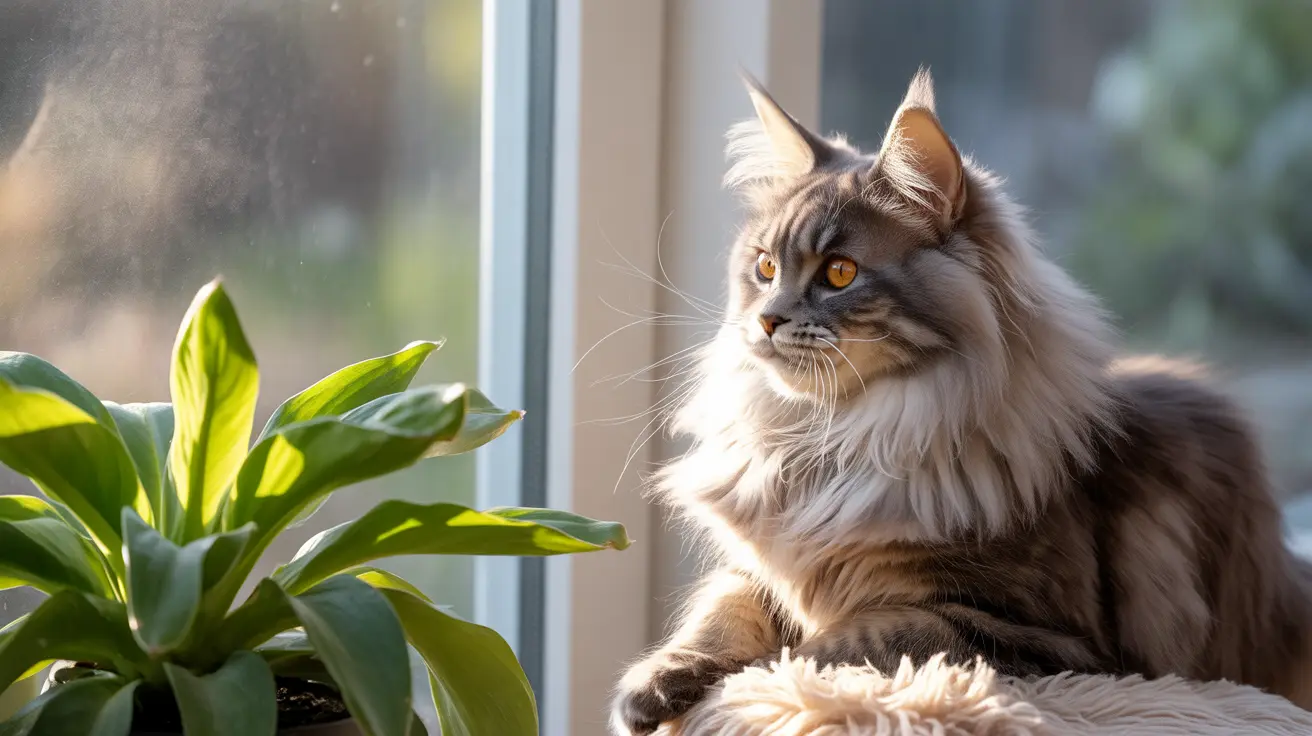Understanding the Dangers of Arrowhead Plants
The arrowhead plant (Syngonium podophyllum), also known as nephthytis, is a popular houseplant that poses significant risks to our feline friends. While its attractive arrow-shaped leaves and air-purifying properties make it a desirable indoor plant, cat owners need to be aware of its serious toxic properties.
This comprehensive guide will explore why the arrowhead plant is dangerous to cats, what happens if your cat encounters it, and how to keep your pet safe. Whether you're a current plant owner or considering adding one to your home, this information is crucial for protecting your feline companion.
The Science Behind Arrowhead Plant Toxicity
Arrowhead plants contain insoluble calcium oxalate crystals called raphides throughout their entire structure. These microscopic, needle-like crystals are the plant's natural defense mechanism, and they can cause severe irritation when a cat bites or chews any part of the plant.
When plant tissue is damaged, these crystals are released, immediately penetrating the sensitive tissues in your cat's mouth, throat, and digestive system. This makes every part of the plant - from roots to leaves - potentially harmful to your pet.
Recognizing Toxic Exposure Symptoms
If your cat has come into contact with an arrowhead plant, you may notice several distinct symptoms:
- Immediate oral pain and irritation
- Excessive drooling or foaming at the mouth
- Swelling of the mouth, tongue, and lips
- Difficulty swallowing
- Vomiting and gastrointestinal upset
- Pawing at the mouth or face
- Decreased appetite and lethargy
Emergency Response and Treatment
Quick action is essential if you suspect your cat has ingested any part of an arrowhead plant. Contact your veterinarian immediately or call the ASPCA Animal Poison Control Center at (888) 426-4435. While waiting for professional help, do not attempt to induce vomiting unless specifically instructed by a veterinary professional.
Treatment typically focuses on managing symptoms and may include:
- Rinsing the mouth to remove crystal residue
- Pain management medication
- IV fluids for hydration
- Monitoring for potential airway obstruction
- Supportive care as needed
Prevention and Safe Alternatives
The best way to protect your cat from arrowhead plant toxicity is through prevention. Consider these safety measures:
- Remove all arrowhead plants from your home
- Replace them with cat-safe alternatives like spider plants or Boston ferns
- Create designated "cat gardens" with pet-safe plants
- Use deterrent sprays on other houseplants
- Provide plenty of enrichment activities to reduce plant-chewing behavior
Long-term Safety Considerations
For homes with cats, it's essential to carefully evaluate all houseplants before bringing them indoors. Many popular plants in the same family as the arrowhead plant (Araceae) contain similar toxic compounds. Always research plant safety and keep a list of pet-safe alternatives handy.
Frequently Asked Questions
Is the arrowhead plant (Nephthytis) toxic to cats, and what symptoms should I watch for?
Yes, the arrowhead plant is toxic to cats. Watch for immediate signs of oral irritation, excessive drooling, swelling of the mouth and tongue, difficulty swallowing, and potential vomiting or gastrointestinal upset.
What immediate steps should I take if my cat chews on or eats an arrowhead plant?
Contact your veterinarian or animal poison control immediately. Don't induce vomiting without professional guidance. If possible, save a sample of the plant for identification purposes.
How does the arrowhead plant's toxicity affect cats compared to other common houseplants?
The arrowhead plant contains calcium oxalate crystals, similar to other plants in the Araceae family. While usually not fatal, its effects can be more severe than some common houseplants due to the immediate and intense irritation these crystals cause.
Can touching the arrowhead plant harm my cat, or is toxicity only a risk if ingested?
The primary risk comes from ingestion or chewing. While touching the plant typically won't cause harm, cats who brush against it and then groom themselves might ingest plant particles, leading to toxic effects.
What are safe alternative houseplants I can have if I want to avoid arrowhead plant toxicity risks for my cat?
Safe alternatives include spider plants, Boston ferns, Swedish ivy, African violets, and many varieties of palms. Always verify plant safety through reliable sources like the ASPCA's toxic plants database before bringing new plants home.
Conclusion
Understanding the risks associated with arrowhead plants is crucial for cat owners. While these plants are beautiful, the potential danger they pose to our feline companions makes them unsuitable for homes with cats. By choosing pet-safe alternatives and maintaining vigilance about toxic plants, you can create a safe and enriching environment for your beloved pet.






